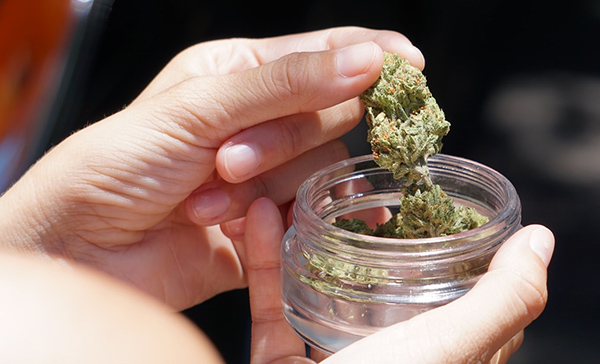How to Identify Laced Cannabis and What are the Risks?
How to Identify Laced Cannabis and What are the Risks?

In this article, we discuss how to identify laced cannabis and what risks this can pose. The method used for lacing cannabis, and the reason behind it is its growing prevalence.
Marijuana is a widely used recreational drug known for its therapeutic properties and relatively mild side effects. However, the prevalence of laced cannabis, where it has been mixed or coated with other substances, has caused serious concern among users.
How do you identify laced cannabis?
Recognizing cannabis laced with other substances requires a keen eye and an understanding of the telltale signs.
One of the most apparent indicators is an unusual smell. Marijuana often has a distinctive earthy smell, but if the aroma is overly chemically, this could be a red flag.
Also, check the bud's appearance - any unexpected discoloration or strange residue could mean adulteration. Changes in taste, such as an unusually bitter or chemical taste, may also indicate the presence of cannabis.
An off smell or taste could mean the cannabis has been laced, or it may indicate the cannabis has been grown with plant growth regulators. These synthetic chemicals or pesticides used to increase yield could be dangerous for human consumption. Read more about PGR weed here.
The reason for laced cannabis

There are a variety of motivations for wanting to enhance potency or the effects of a drug. They are often rooted in the desire for profit.
It's not about dodgy dealers cutting weed with some oregano to increase its weight and improve profits.
Unscrupulous dealers may add synthetic cannabinoids, chemicals, or more potent drugs such as PCP (phencyclidine), cocaine, or other opioids to cannabis. This process can involve coating the buds with or mixing in other substances during the cultivation, drying, or packaging of the cannabis. It is unethical and can pose a severe health risk to unsuspecting users.
The adulterated cannabis products can have increased potency and addictiveness or have mind-altering effects.
Synthetic cannabis, of which Spice is an example, is linked to severe health issues ranging from difficulty breathing to psychotic episodes and can leave users in a vulnerable zombie-like state.
Motivations for lacing cannabis use are varied and often associated with the illegal drug trade, underscoring the importance of vigilance when obtaining cannabis from unknown sources.
Health risks associated with laced cannabis
Consuming substances laced with other drugs poses serious health risks that extend beyond the typical effects of marijuana use. For example, synthetic cannabinoids can cause serious adverse effects such as hallucinations, anxiety, seizures, and even death. Marijuana containing cocaine may increase the risk of cardiovascular disease, while PCP may induce psychosis and unpredictable violent behavior.
Users must be aware of these risks and exercise caution when acquiring cannabis products.
Conclusion
As marijuana gains legal status in different regions, users must prioritize safety and well-being. Detecting laced cannabis requires a combination of sensory awareness and suspicion, and users should be vigilant when buying cannabis. Wherever possible, use trusted registered dispensers and reputable licensed sellers.
Understanding the methods behind lacing cannabis and the motivations that drive this harmful practice can enable individuals to make informed choices and avoid the potential health hazards associated with adulterated cannabis.
